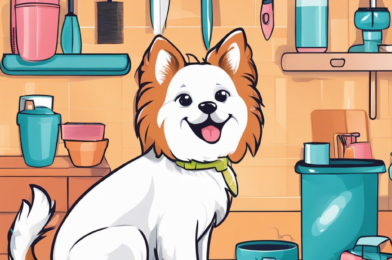**Grooming Your Furry Friend: A Comprehensive Home Guide**
Grooming your pet is an essential part of responsible pet ownership, ensuring your beloved companion looks and feels their best. While professional groomers offer excellent services, many pet owners prefer the convenience and cost-effectiveness of at-home grooming. This step-by-step guide will teach you how to groom your pet at home, fostering a strong bond and a healthy coat. Whether you’re a dog or cat lover, these techniques will make the grooming process a breeze!
Before starting, ensure you have the right tools. For dogs, gather a brush, comb, nail clippers, shampoo, conditioner, and a towel. For cats, a brush, nail clippers, and a gentle cat shampoo are essential. It’s important to choose pet-specific products to avoid skin irritation. Begin by establishing a routine. Pets, especially dogs, thrive on consistency. Set a regular grooming schedule, ideally once a week, to accustom your pet to the process. Start with brushing to remove loose hair and prevent matting. Use a brush suitable for your pet’s coat type. For dogs, brush in the direction of hair growth, paying extra attention to areas prone to matting, like behind the ears and under the legs. Cats generally enjoy grooming, so a few strokes with a soft brush will often suffice.
Bathing is the next crucial step. Create a comfortable bathing area, preferably in a warm room. For dogs, wet their coat thoroughly, apply shampoo, and massage gently, being careful to avoid their eyes and ears. Rinse well and follow with a conditioner to add shine. For cats, use a damp cloth or a gentle shower spray, and only a small amount of cat shampoo, as they tend to groom themselves. Remember to dry your pet thoroughly afterward to avoid chills.
Nail trimming is essential for your pet’s comfort and health. Introduce your pet to nail clippers by rewarding them with treats, ensuring positive associations. Trim nails carefully, avoiding the quick (the pink area inside the nail). If you’re nervous, ask a veterinarian for guidance. Grooming your pet at home is a rewarding experience, promoting bonding and your pet’s well-being. With the right tools and a gentle approach, you’ll become a proficient groomer in no time!






